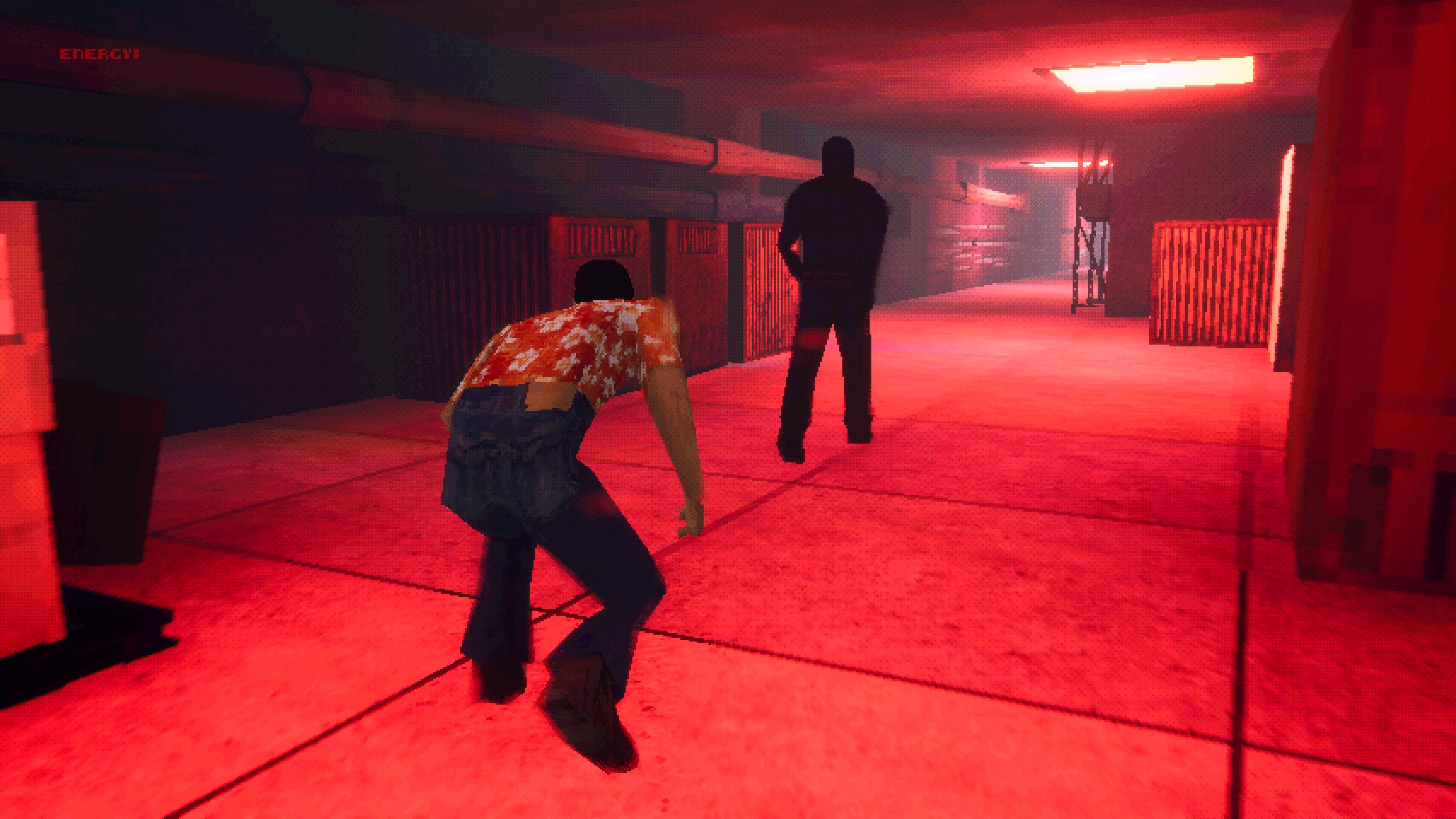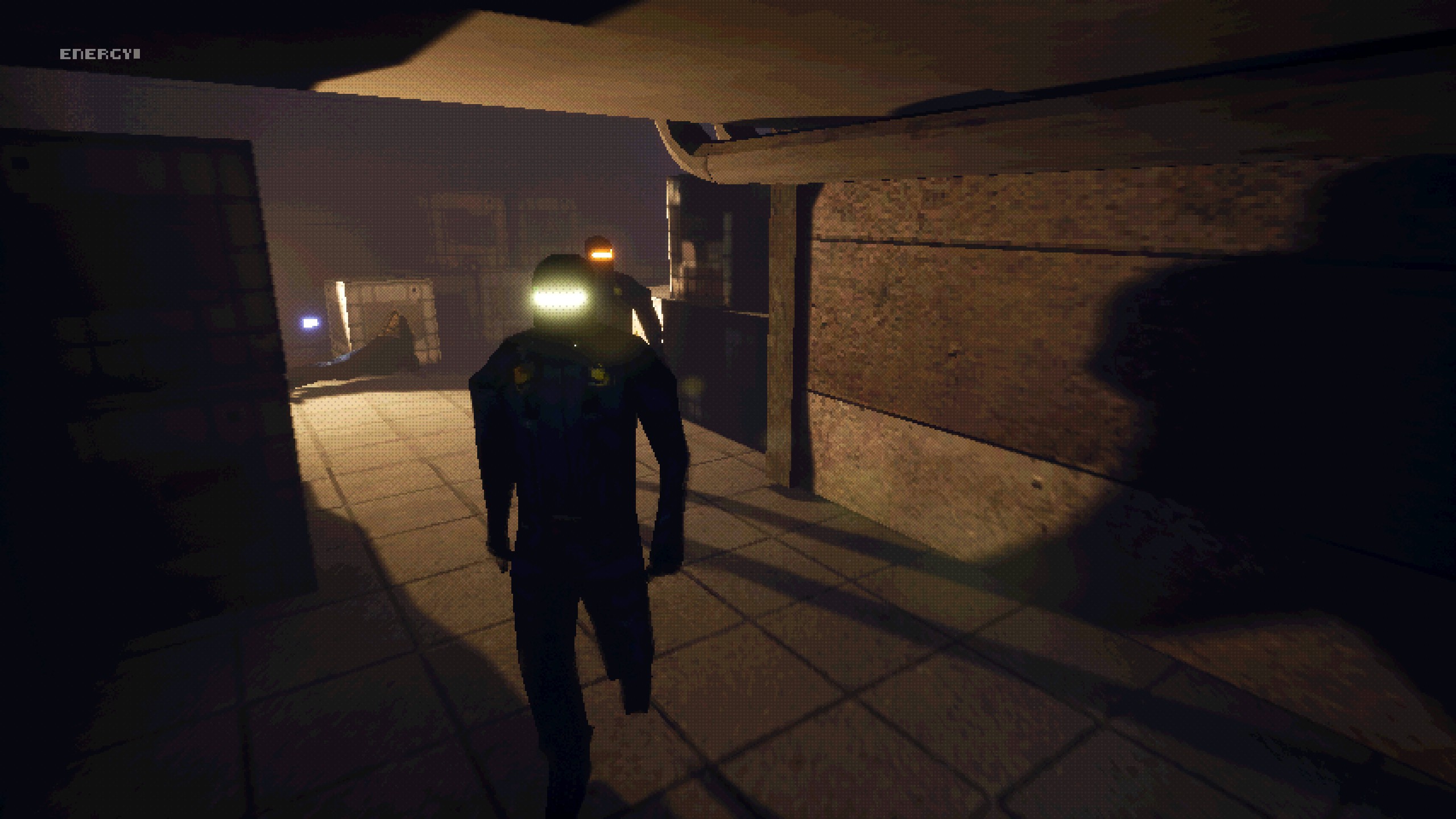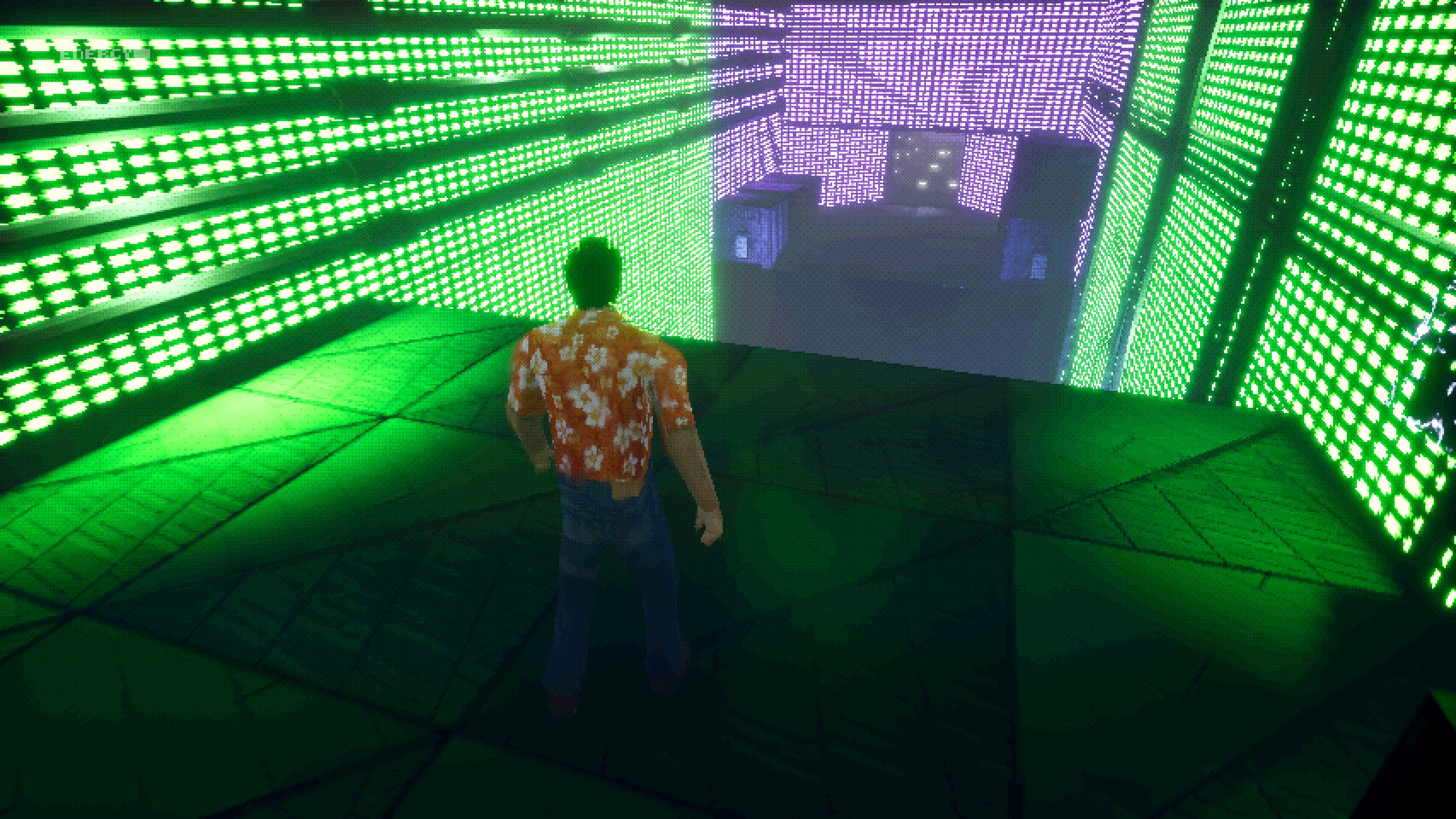
To make a great stealth game, atmosphere is crucial. Games are about interaction, so if your game involves spending long periods of time crouched behind a box, the world has to do a lot of work to make that experience interesting. It needs to find ways to make you feel like doing nothing is still an active choice, letting you plan your next moves through listening to the soundscape, or making you feel like staying in one place for too long is going to be a bad idea.
The Chameleon is positively dripping in atmosphere. This hybrid throwback of late seventies fashion and early nineties 3D graphics is one of the eeriest games I’ve played in a while. It’s Splinter Cell by way of David Lynch, a nuts ‘n’ bolts stealth game with one neat gimmick slathered in surrealist horror.
Playing as a nameless, moustachioed fellow wearing a garish Hawaiian shirt and fitted blue denims, you awake in the depths of a labyrinthine research facility, where a shady organisation has been performing equally shady scientific experiments. The reason why you’re in this facility isn’t explained, though given you wake up surrounded by dead guards, there’s an implication that you are one of those experiments.
Mechanically, the Chameleon is a competent, if not spectacular third-person sneaker. You squat your way through the facility’s lo-fi corridors, avoiding guards by hiding behind obstacles and timing your movements to slip through their patrols. To aid in your escape, you have a couple of special abilities. The first of these is a superpowered punch, which will send unsuspecting guards flying across the room (often into the paths of other guards, which is equal parts amusing and annoying). The second is the ability to disguise yourself as a guard at any moment, altering your exterior form to precisely mimic their appearance. This metamorphosis is accompanied by an extremely disgusting noise, which sounds like someone kneading raw mince into their own eyeballs.

Both abilities draw from the same energy pool, meaning you need to think carefully about how to deploy them. Using your chameleonic powers may leave you unable to defend yourself if spotted, but knocking out enemies comes with its own risks. The guards, who are actually G.U.A.R.D.S – robotic drones operating under the umbrella term Global Unified Advanced Research Defense System – are extremely perceptive, appearing to be telepathically linked to one another. Knocking out one guard will often attract the attention of others. They won’t be immediately alerted, but they will home in on their fallen comrade to investigate.
You also start the game with only a tiny amount of energy, enough to disguise yourself for a couple of seconds at most. To increase your energy reserves, you must locate and collect glowing purple canisters dotted around the environment. This is a simple yet effective way to encourage exploration, while also forcing you to dance with more peripheral guard patrols rather than making a beeline straight to your current objective.
The Chameleon’s systems are tightly knitted together, but what makes it interesting is the strangeness the experience. New powers take the form of amorphous biological blobs that assimilate with you when you touch them. The soundscape, meanwhile blends a grungy synth soundtrack with unsettling ambient noises. The robotic guards are particularly unnerving, making harsh bleeps when they switch from a passive to suspicious mode, and emitting an industrial shriek when they’re alerted. They remind me of Bioshock Infinite’s Boys of Silence, only they’re in the game for longer than five seconds and aren’t a huge disappointment.
The biggest gaming news, reviews and hardware deals
Keep up to date with the most important stories and the best deals, as picked by the PC Gamer team.

The gloomy, grainy aesthetic complements The Chameleon’s pseudo-horror vibes. I love the game’s fat, chunky pixels that constantly twitch and judder even when the camera is static, lending the visuals a pleasing watery effect. But The Chameleon isn’t a strict graphical throwback. It utilises modern shading and lighting techniques, giving it a distinctive look that helps lend variety to the facility’s largely grey corridors. Not that the game is entirely grey corridors. In one area I discovered a room that’s a vast hall of blinking lights. In another part of the facility, I stumbled across a secret room covered in cryptic messages scrawled in neon paint.
There are a couple of smaller details that I appreciate too. The game gives you no objective markers on your hud, while maps are only found pinned to the facility walls. But key in-game objects, like energy upgrades and control panels for opening doors, emit specific noises that let you gradually home in on them. It’s a smart approach to player navigation, providing some guidance without simply pointing the player in the right direction.
The playable demo, which released as part of Steam’s Next Fest but is still available to play, can be comfortably finished within an hour. But it was enough to get me intrigued by The Chameleon. I hope that it expands the range of powers beyond the three the game demonstrates (you get a dash feature near the end of the demo that you use once), as the stealth play could become quite staid without more variety. But I’m fascinated by its bizarre atmosphere and mysterious research facility, and I’m keen to unpick its secrets when the full game launches in July.
Rick has been fascinated by PC gaming since he was seven years old, when he used to sneak into his dad's home office for covert sessions of Doom. He grew up on a diet of similarly unsuitable games, with favourites including Quake, Thief, Half-Life and Deus Ex. Between 2013 and 2022, Rick was games editor of Custom PC magazine and associated website bit-tech.net. But he's always kept one foot in freelance games journalism, writing for publications like Edge, Eurogamer, the Guardian and, naturally, PC Gamer. While he'll play anything that can be controlled with a keyboard and mouse, he has a particular passion for first-person shooters and immersive sims.

